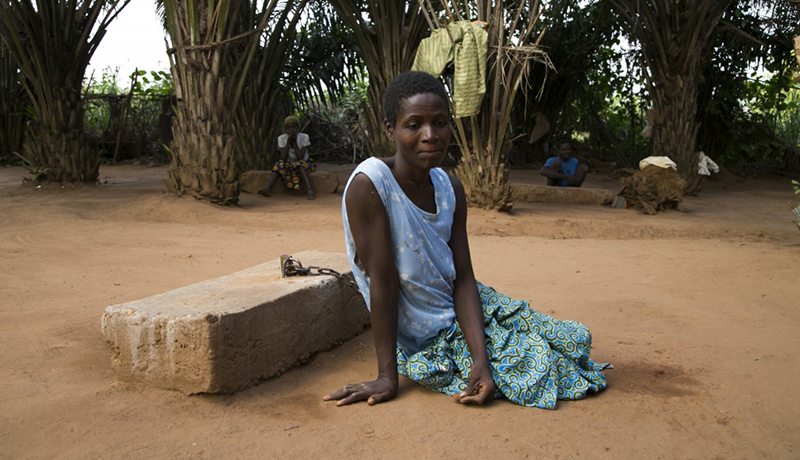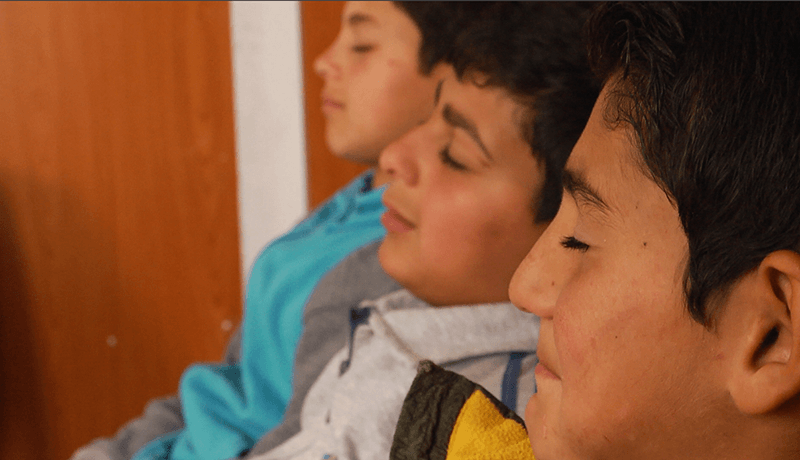Someone to Listen
Treating Mental Illness in the Slums
By Olivia Fellows, Emily Fister, Pauline Holdsworth and Emi Sasagawa
Nearly half of the population of Pune, a city two hours from Mumbai, lives in a slum. Rocky is one of those people. His home is small, like many of the other houses around, and is adorned with religious icons and symbols. Rocky spent the last three decades battling psychosis and often sought help in temples, where he hoped to find a cure for his troubles.
Rocky is one of 70 million Indians living with severe mental illness in India – a country of more than 1.2 billion people, but with fewer than 5,000 psychiatrists. A severe lack of resources means many people living with mental illness are neglected and fall through the cracks of an under-resourced public healthcare system.
This lack of resources also means that people end up in mental institutions, when often all they need is counseling or mild forms of medication. The history of Indian mental asylums is a grim one. Human Rights Watch (HRW) recently put out a report about widespread abuse of patients in Indian institutions. They visited institutions where patients faced unsanitary conditions, involuntary treatment, and a risk of physical and sexual violence.
While some institutions, such as the Institute of Human Behavior and Allied Sciences in New Delhi, are doing good work, many have come under attack for harbouring sub-standard facilities, neglecting and abusing patients. At the event where HRW announced their findings, they invited Dr. Bhargavi Davar, a passionate mental health advocate, and founder of Bapu Trust, to join. HRW pointed to her model of community-based care as a far more effective alternative to institutionalization in India. Dr. Davar’s inspiration for Bapu Trust came from her watching her mother suffer with psychosis and abuse in mental institutions.
Bapu Trust is one of many NGOs in India looking to fill the gap in resources left by the government. The community-based mental health organization dispatches teams of workers who go door-to-door in the slums, searching for people suffering from mental illness. Bapu Trust relies on community members to identify mental illness, and aims to teach family members and neighbours that mental illness is nothing to fear.
For about $100 a year per client, Bapu Trust is able to offer the kind of support that simply does not exist in most slums in India. While the organization connects some patients with clinics and doctors, Bapu Trust relies heavily on arts-based therapies and psychosocial interventions to help their clients. Using sound and art, the organization has championed a unique method that has helped many people cope with the difficulties of mental illness.
Community-based mental healthcare has been incorporated into various programs across India and the world. Dr. Vikram Patel, a trained psychiatrist and expert on global mental health, is one of the early pioneers of the model.
When an epidemic of farmer suicides swept through rural villages in the Indian state of Maharashtra a decade ago, Dr. Patel was called in to help. He set up VISHRAM, a program where locals train to serve as social workers and knit patients into the Indian healthcare system. We visited Nagpur, the city where VISHRAM is located, to speak to farmers who had attempted suicide and are now getting help.
In Nagpur we met Rajani, the widow of a farmer who died by suicide. She epitomizes the economic burden of mental illness – left to take care of not only her two daughters, but also their family farm, all alone. And since she is tainted with the stigma of her husband’s suicide, she can never remarry.
Only recently have global bodies like the UN and the World Bank recognized the economic burden of mental illness. According to the World Economic Forum (WEF), mental illness costs the world more than cancer, more than heart disease and more than diabetes. The global cost of mental illness in 2010 was $2.5 trillion. By 2030, the WEF expects that number to rise to $6 trillion. This cost combines both the price of treating mental illness and the lost economic output from people who are either unemployed or underemployed because of a mental illness.
While various groups and hospitals try to help mentally ill patients, for the vast majority of Indians suffering from mental illness, the first – and often only – place they visit is the traditional healer. It is widely believed in India that people who hear voices, and even those suffering from depression, are possessed by spirits.
In the city of Admenaghar, a few hours from Pune, lives a prominent traditional healer. Abid Kadri is a fourth-generation Koranic healer who uses a mix of Muslim and Hindu traditions to treat people who are suffering.
Organizations like Bapu Trust respect traditional healers and sometimes even rely on them for referrals. By tapping into every resource available, they can make sure that patients get a basic level of care. In a country like India, where so many people are falling through the cracks, the most simple solution might be having someone to listen.









